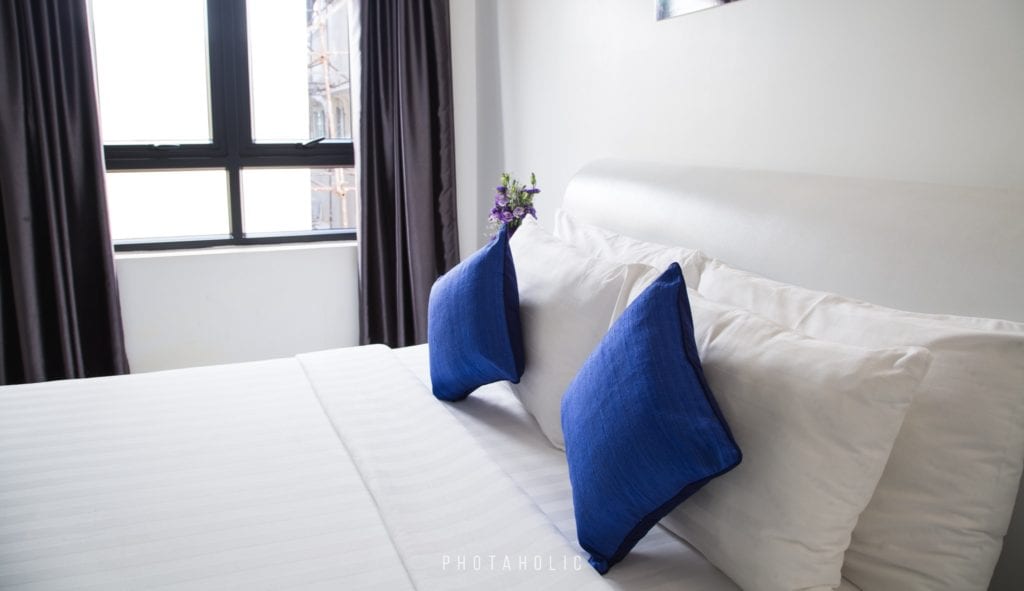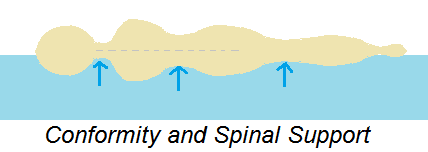
By Dr. Rick Swartzburg, D.C.
A good mattress will protect the back for the many hours that you are in bed. A mattress that properly supports the body will also be a very important element in helping relieve stress on the muscles and joints of the back. The most important information needed for finding a correct mattress to support the back involves knowing what position you sleep in.
A mattress that properly supports the body should be solid enough to not cave inward with body pressure and yet have enough give to allow contouring of the body. This is especially important with side sleepers, as a lot of pressure is placed on the shoulders and hips. Don’t be fooled by all those promotions which state that firm mattresses are necessary for good support. Firm mattresses work better for back sleepers than they do for side or stomach sleepers.
While back sleepers can get away with a more firm mattress, the contouring of the body that occurs with a mattress that gives when pressure is applied will hold the body in a more proper position for a comfortable sleep. Sleeping on your stomach can be irritating to your neck and back due to the complete rotation of the neck to one side while in this position. To help yourself achieve the best sleep for whatever ever position you are sleeping in, keep the following in mind:
Choose a mattress that feels like it gives enough on the surface to comfortably keep you locked into a supportive position. Memory foam and latex foam will accomplish this the most effectively. Memory foam is a pressure-sensitive or temperature-sensitive polyurethane foam that has the ability to compress, but then slowly come back to its original shape. Therefore, memory foam does not place nearly the same resistance on the joints as spring, air, and other materials that bounce back too rapidly and actually put more loading force on the body.
Memory Foam Mattress Layers
Memory foam mattresses are usually composed of three inches of visco-elastic foam, over five inches of conventional and springy polyurethane foam. High density polyurethane material makes an ideal supportive base for the mattress, but it should be at the very minimum of 1.8lb. per cubic foot.
Memory foam is usually found in three to five-pound densities. The higher density memory foam, usually five pounds and up, will become softer when it heats up with body temperature and harder with any drop in room temperature. This makes five-pound memory foam more temperature-sensitive, heavier, and usually stiffer (especially when the temperature drops at night). Three and four-pound memory foam will, therefore, be less temperature sensitive and less dense, more soft, less expensive, but also a little less supportive.
The higher density of memory foam and its viscoelastic nature (which allows it to conform around the body so well), also can create more heat. Gel was proposed as a solution to reduce heat body heat build-up, but since gel is a conductive substance, it will only take on the surrounding air to make the foam cooler initially. Then that same conduction ability will eventually allow the gel to warm to your body’s temperature as you sleep on the mattress, thereby creating more heat. 
Airflow Transfer System
This can be created by ventilating the foam with thousands of small holes. However, you can gain the benefits of full airflow circulation from the patented Airflow Transfer System, which is found on the Snuggle-Pedic Mattress. It is also found in Tempflow Mattresses and is an option in Selectabed models.
Certain types of latex foam will also be soft enough to contour the body, but provide a bit more of a spring effect. This material can be combined well with memory foam to make up a mattress, but neither substance should be used in the bottom base layer of the mattress. This is because you never want to sink too much into the mattress, as this would cause a folding effect on your body, and you would lose support. For this reason, people who are primarily side sleepers can utilize more of the memory and latex foam. The shoulders and hips stick out further, and therefore need more contouring if you are attempting to evenly distribute your weight over the whole of the mattress. People who are primarily back sleepers may need more of a firmer support material and less of the softer surface foam, as only shallower contouring of the body is needed
While it is not recommended that you sleep on your stomach, if you do, then always put a pillow or wedge under one side of the pelvis and same side leg, thereby limiting the amount of rotation of the upper spine. Back sleepers can place a pillow under their legs to reduce traction on the spine.
When lying on your side, always put a pillow or orthopedic leg spacer between your knees to prevent rotation of the pelvis and spine. Leg spacers help prevent torque on the spine from pelvic rotation when you are on your side, while moving with your body if you roll on your back. This measure will combine to keep your spine in a more correct alignment while sleeping.
Those that sleep in multiple positions will do well with a balance that is not too soft, not too firm and has just the right amount of contouring to keep the spine in proper alignment.
Going to a mattress store to shop for the best feel can only give you so much information since you will never truly know how a mattress will do for your body until you sleep on it. So, it will be absolutely important to make sure you only purchase a mattress with a good return policy, and even better, if you can purchase one with a customization policy* that will allow you to modify or exchange the mattress to truly dial in the best configuration for your needs.
*Snuggle-Pedic offers free customizations with their mattresses.

